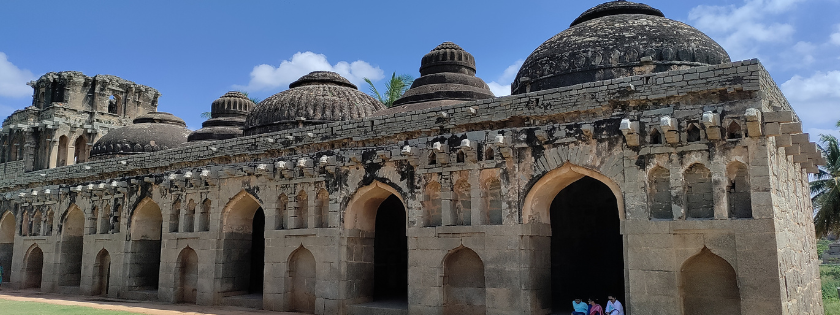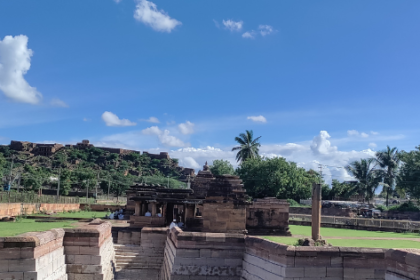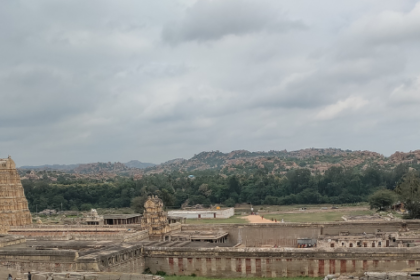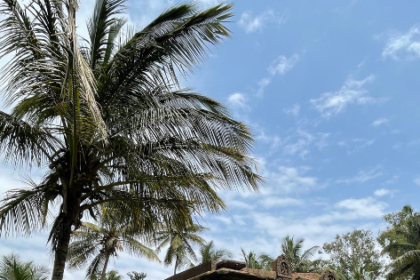To read the previous blog on Hampi-Badami Day-4 click here
Day 5: The Royal Enclosures of Hampi and Return to Belagavi
We spent our final morning in Hampi exploring the royal enclosures, including the Queen’s Bath, the Octagonal Bath, and the grand Royal Palace. Sophie seemed as fascinated by the expansive grounds as we were! We then visited the Hazara Rama Temple, Lotus Mahal, and Elephant Stables—all remnants of Hampi’s glorious past. All these monuments are in the same premises and cars can go till the entrance of each monument. Parking plot is located opposite to the octagonal and washroom facility is just outside Lotus Mahal (near the ticket counter). My pet was allowed everywhere in this premises except inside the buildings where there was separate ticketed entry.
ROYAL PALACE, HAMPI
You can climb to the top of the Royal Palace ruins for a panoramic view of the surrounding heritage structures. Though the palace has been partially reconstructed using the remains found on-site and doesn’t fully reflect its original form, it still offers a great vantage point. Several other monuments are located nearby, all within easy walking distance, making it a great spot to begin your exploration.
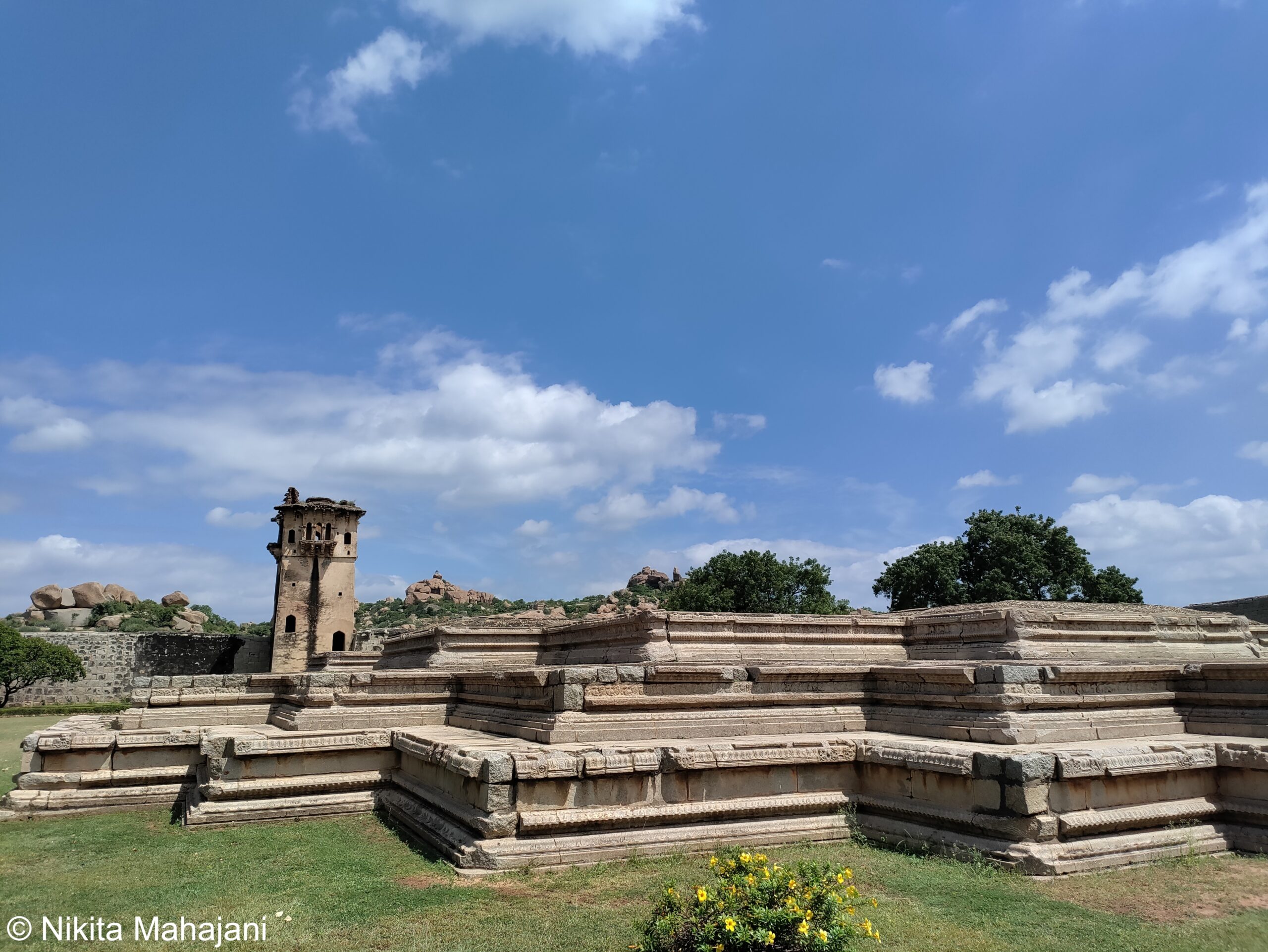
HAZARA RAM TEMPLE
The Hazara Rama Temple is one of Hampi’s hidden treasures, offering a glimpse into the refined artistry of the Vijayanagara Empire. Built in the early 15th century as a private shrine for the royal family, this temple is dedicated to Lord Rama. Its name—Hazara Rama, meaning “a thousand Ramayanas”—comes from the stunning series of bas-relief carvings that cover its walls, vividly depicting scenes from the epic Ramayana in remarkable detail. A true treat for history buffs and art lovers alike!
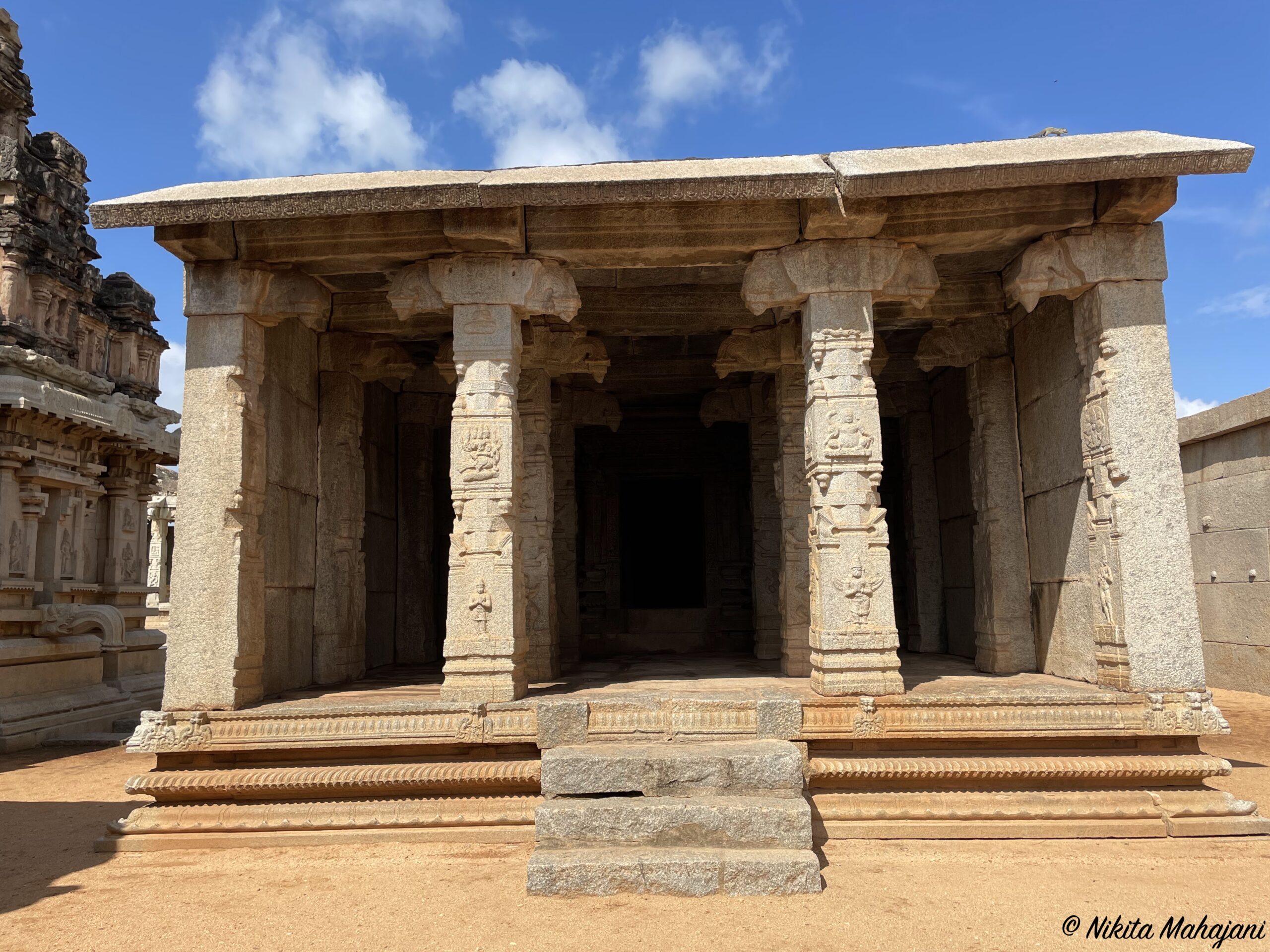
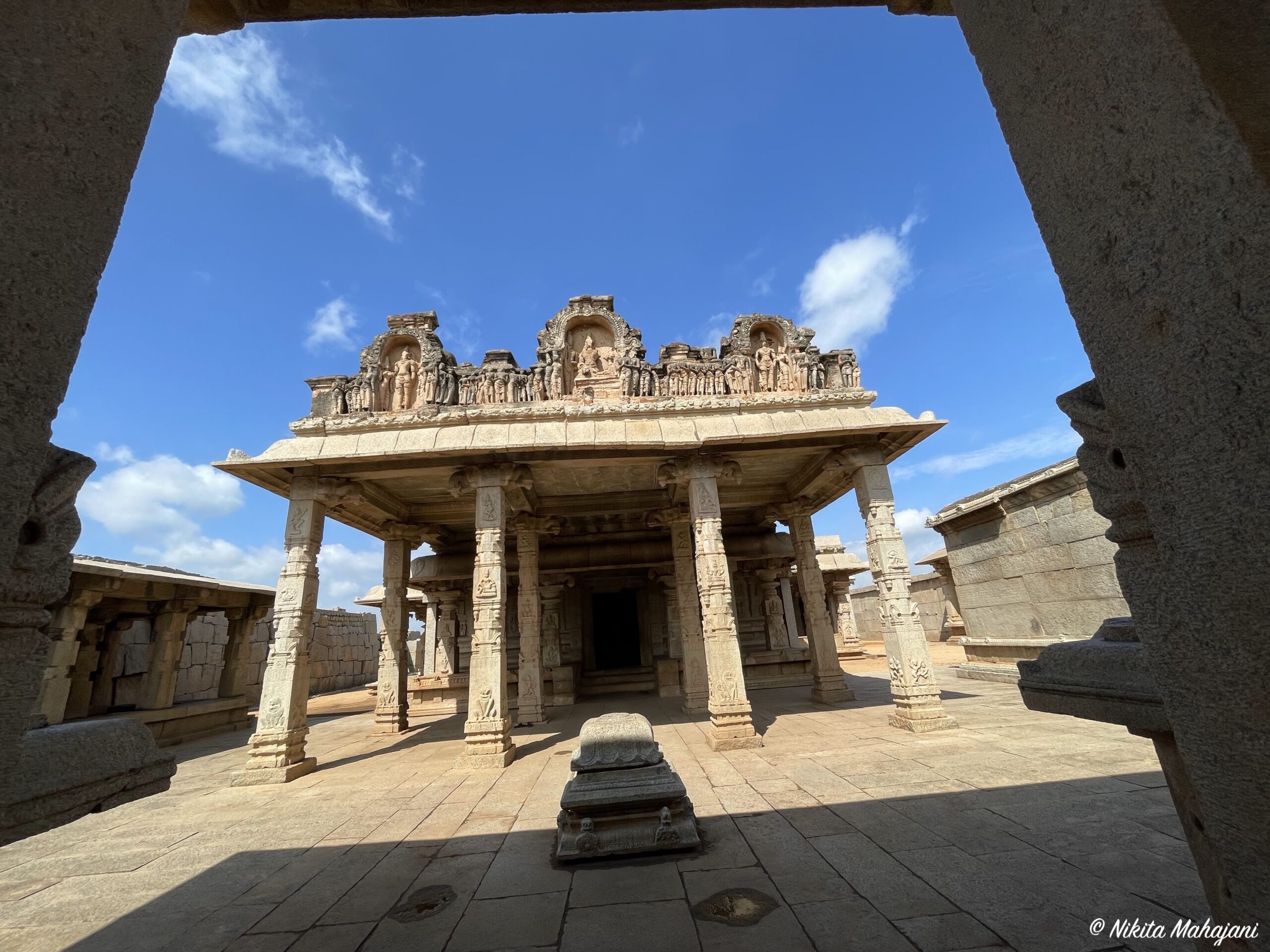

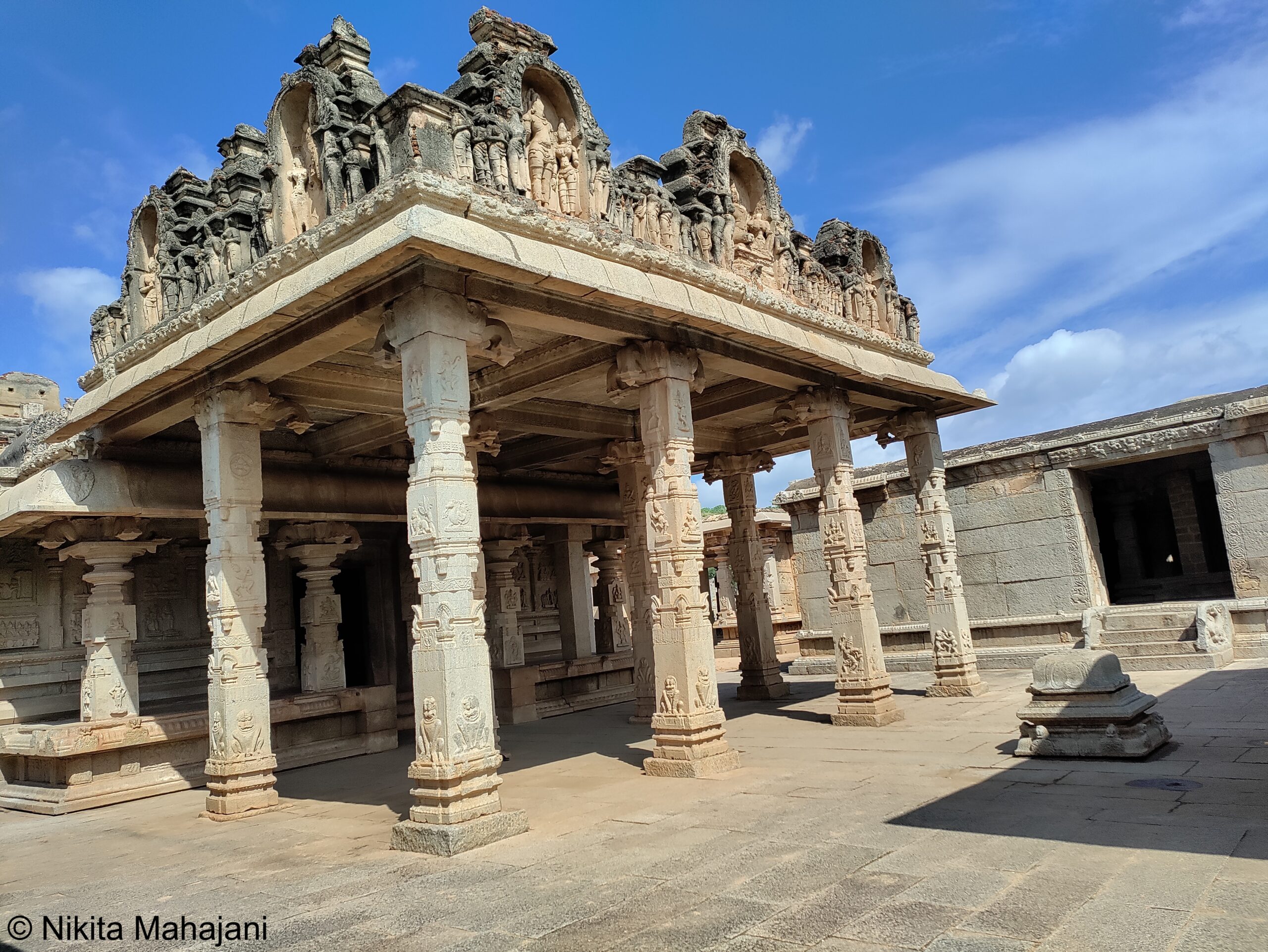
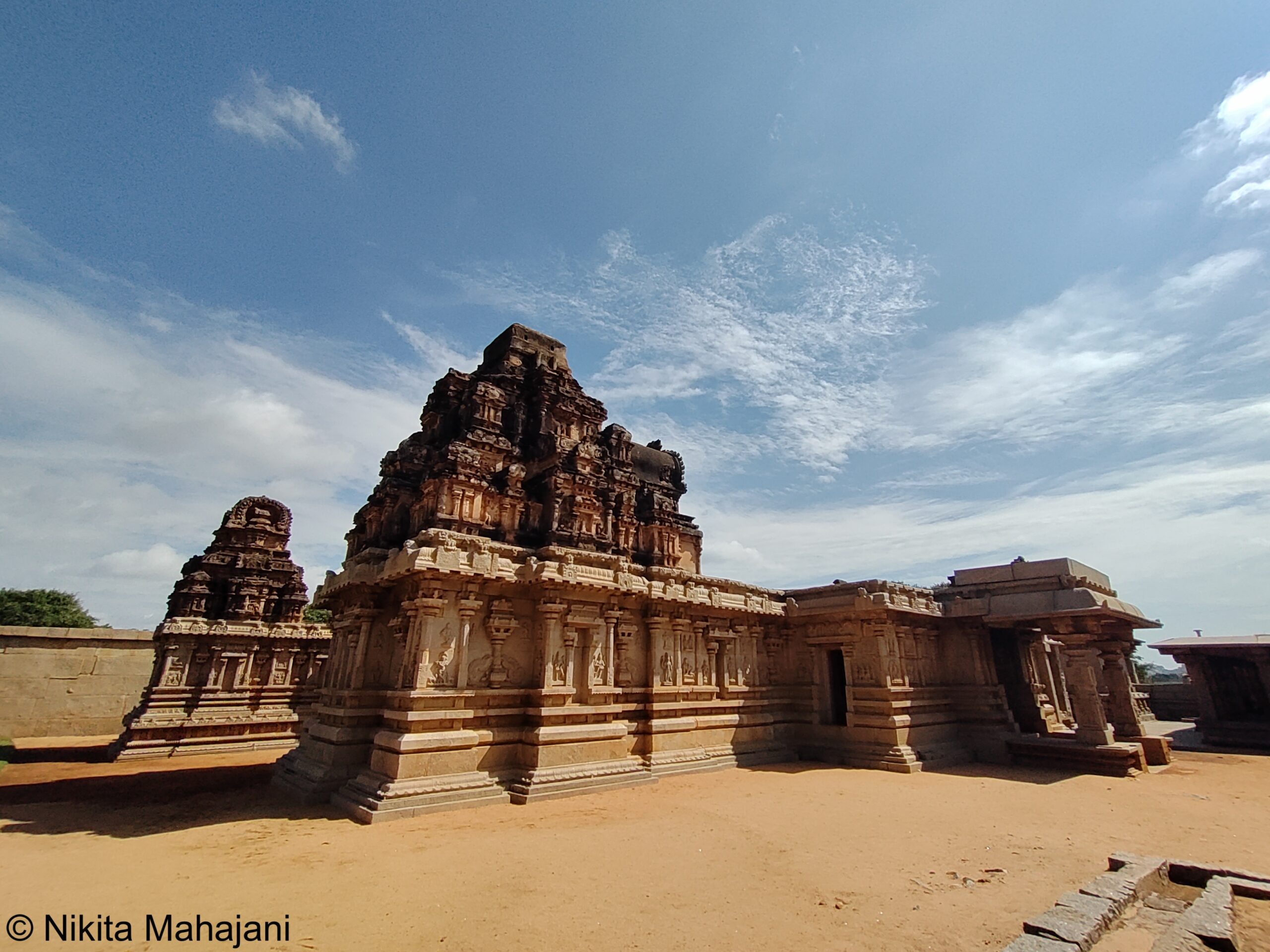
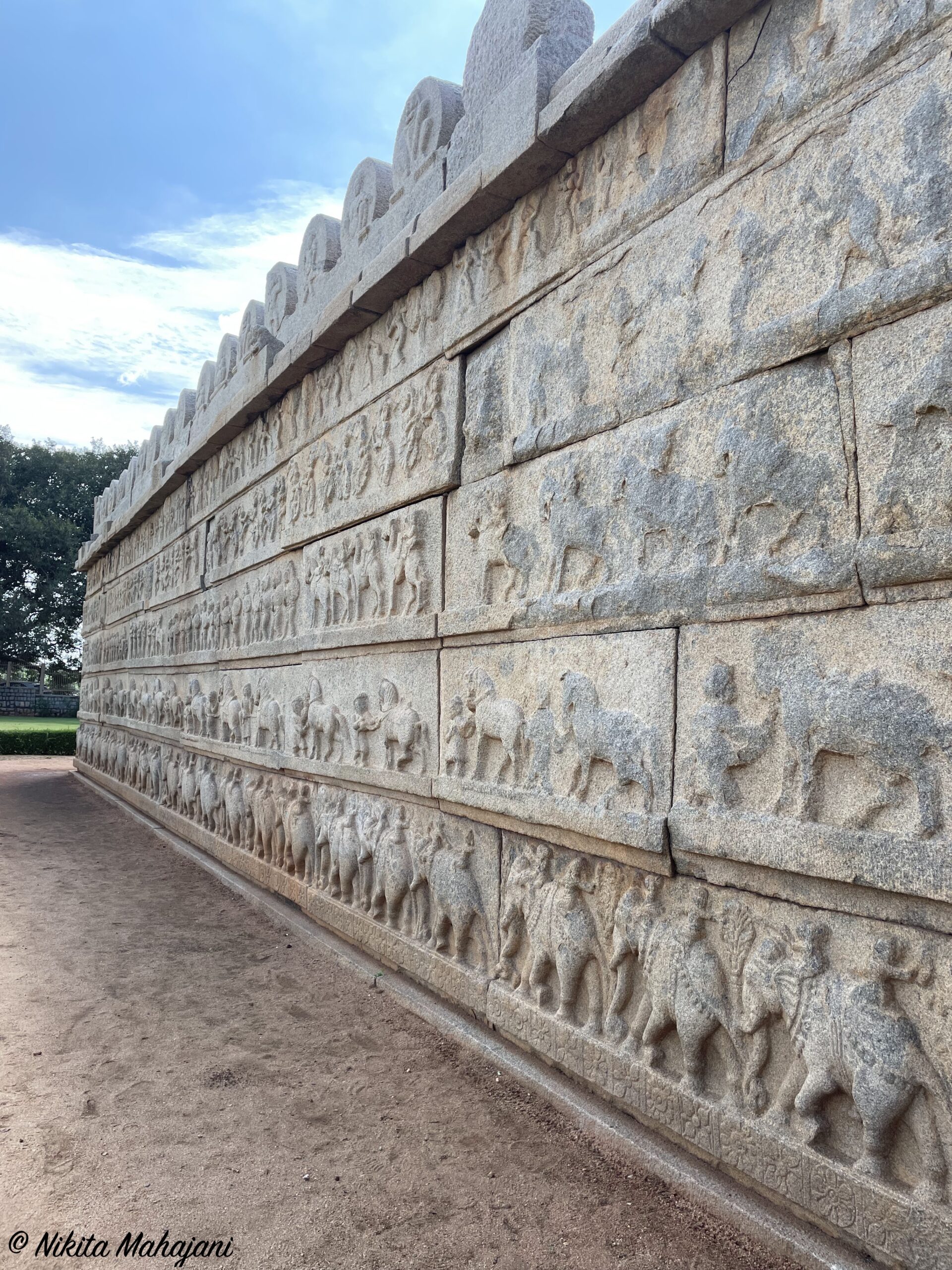
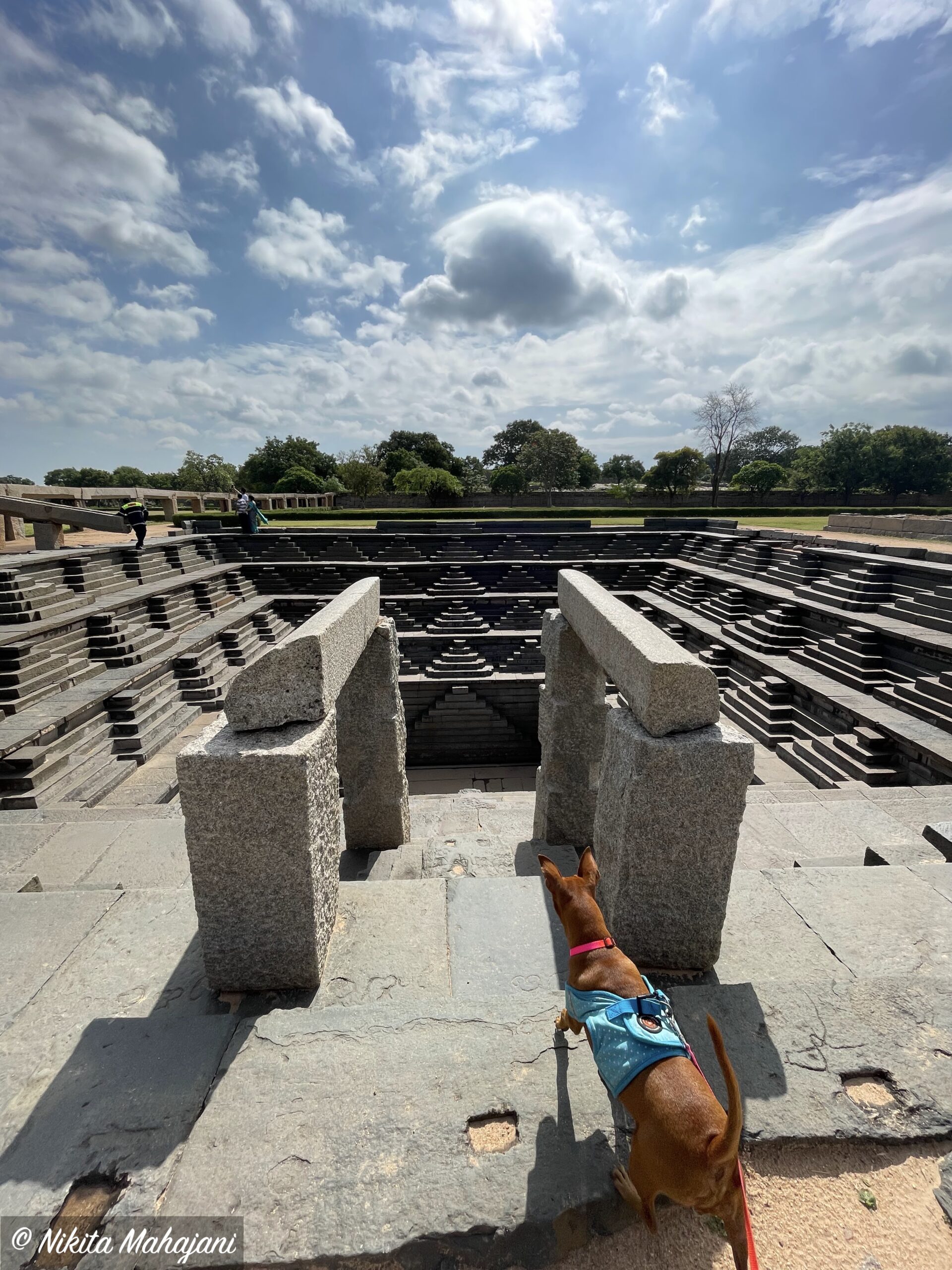
PUSHKARINI KOLA (STEPWELL)
Pushkarini Kola is a stunning stepwell that captivates with its perfectly symmetrical and almost hypnotic design. Crafted from black schist stone, this five-tiered tank features beautifully arranged pyramidal steps leading from one level to the next. Interestingly, the number of these step formations increases in an odd sequence—1, 3, 5, and so on—creating a visually pleasing rhythm.
Each stone block appears to be marked with numerals, symbols, and Kannada inscriptions, hinting at the precision and care behind its construction. While entry into the stepwell is restricted, it’s well worth a visit. Be sure to check out the nearby elevated aqueduct, which once channeled water into the tank, and the intricately carved stone thalis (plates) close by—they’re equally fascinating!
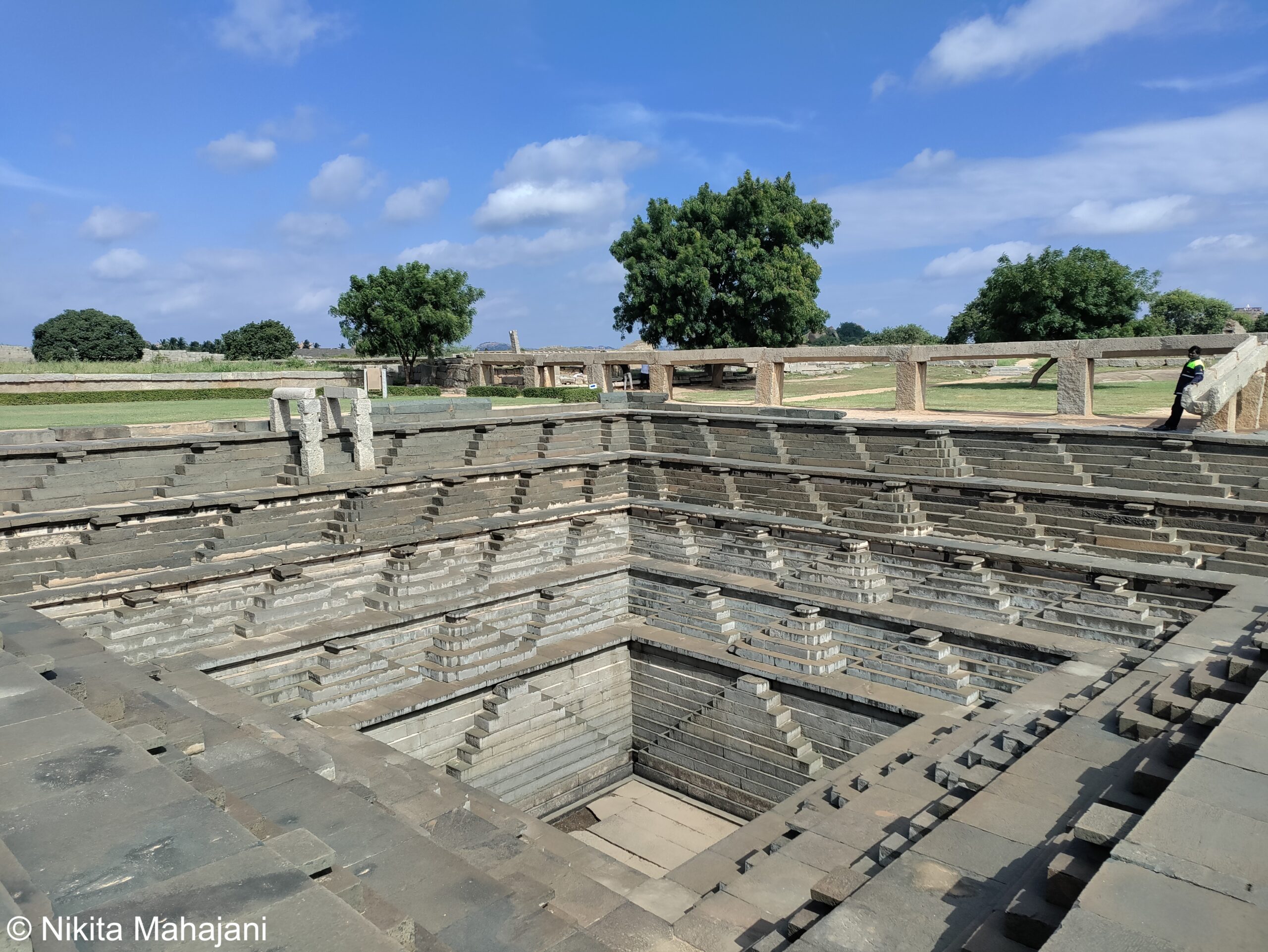
ELEPHANT’S STABLE
Tucked inside the Zanana Enclosure of Hampi, the Elephant Stables are a striking reminder of the Vijayanagara Empire’s grandeur. Once used to house the royal elephants, this impressive structure blends utility with elegant architecture.
The stables feature eleven interconnected chambers lined up in a north-south direction, stretching across 85 meters. Each chamber boasts a high arched entrance topped with a beautifully crafted lotus-shaped dome, making the entire row look both majestic and harmonious. Accessible through a modest eastern gate, the stables are a must-see for anyone exploring Hampi’s royal past.
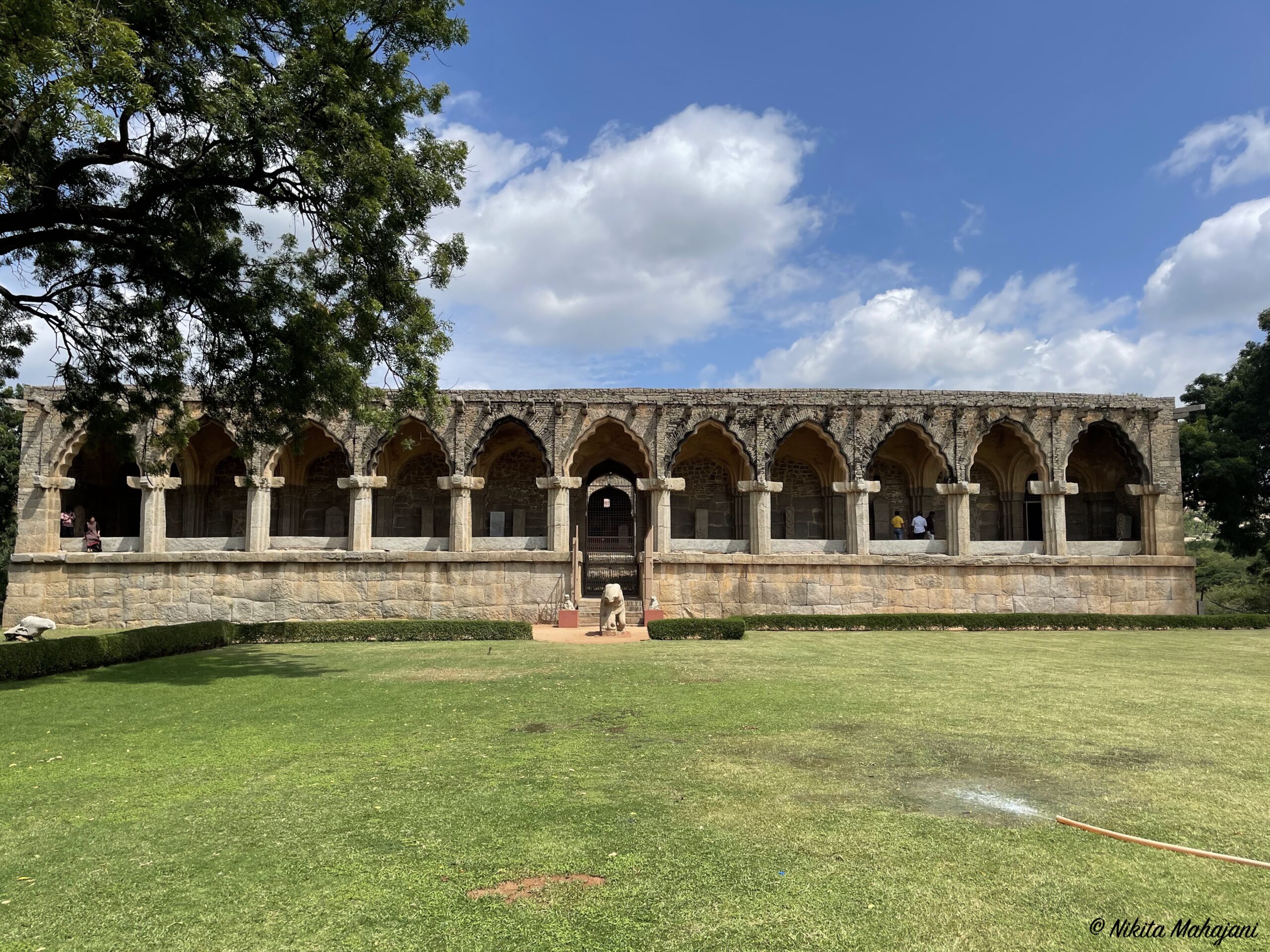
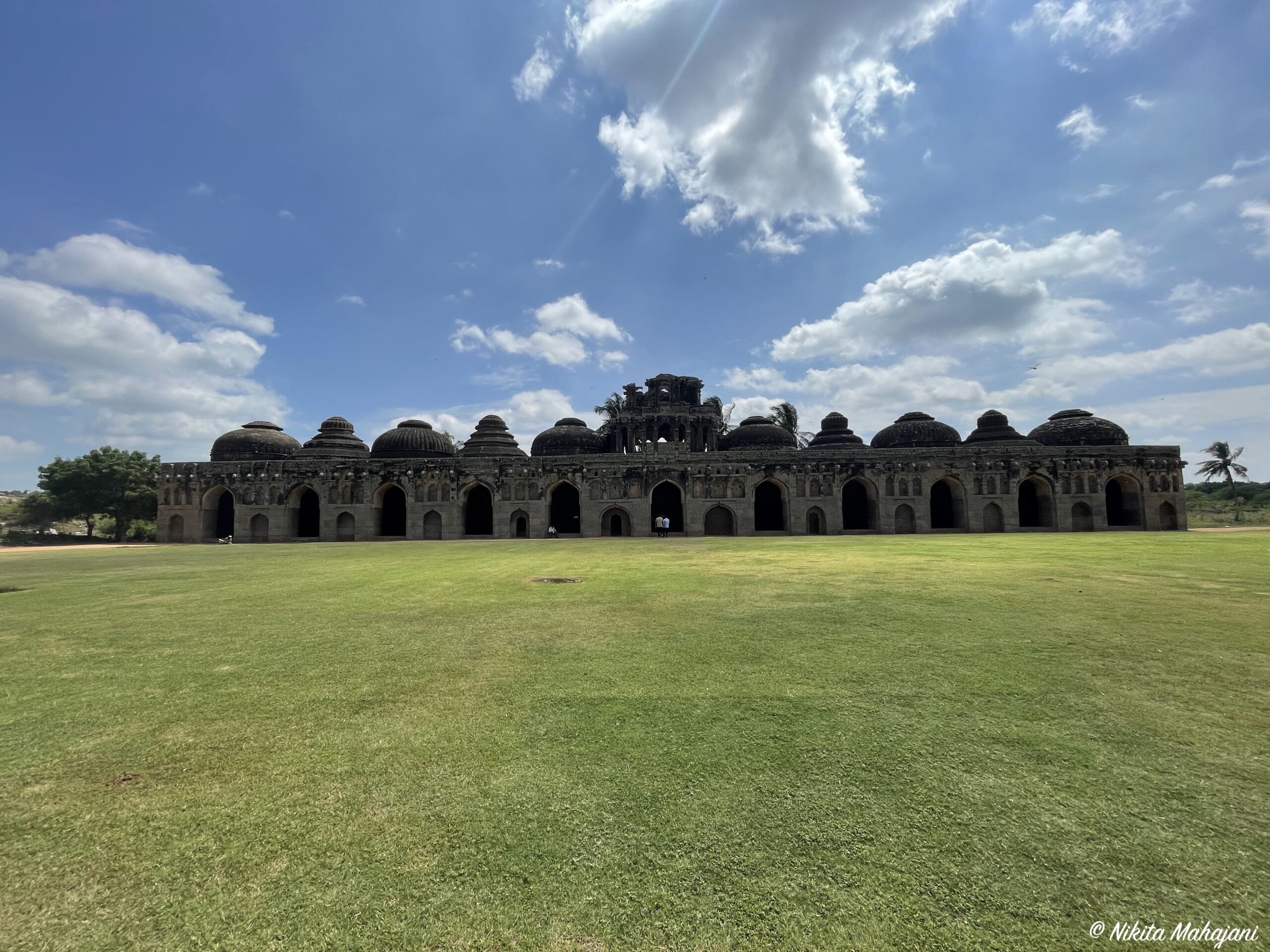
LOTUS MAHAL
The Lotus Mahal also known as Chitrangi Mahal is a two storeyed structure in Indo-Islamic style of architecture. It stands on an ornate stone adhisthana (plinth) and square in plan with projections and recessions in the cardinal directions. The first storey is an open pavilion and has twenty-four square pillars carrying recessed and foliated arches. It has a vaulted ceiling and at the center is a plain flat coffered section with a lotus-bud in the middle. A staircase on the north side leads to the upper storey which has a number of balconies with windows having recessed and foliated arches. The ceiling of the upper storey consists of vaulted as well as flat-roofed sections. The central part features a deep clerestory elaborately ornamented with stucco arches, friezes and ledges, pushpa-podigai (flowerbud corbels) and large niches with remnants of seated figures. It culminates in a small ornate ribbed inverted lotus dome. The superstructure consists of nine pyramidal towers of varying sizes. The exterior of the first storey is more decorated than the upper one featuring plaster and stucco ornamentation consisting of medallions, scroll work and simhamukha decorations. The cornice of the first storey is supported by ornate curved brackets. The brackets at the outer corners were originally supported by large rampant yalis, of which a mutilated one is now extant on the east side. In its original state, fully ornamented with plaster work and painted, the Lotus-mahal must have been a very imposing structure.
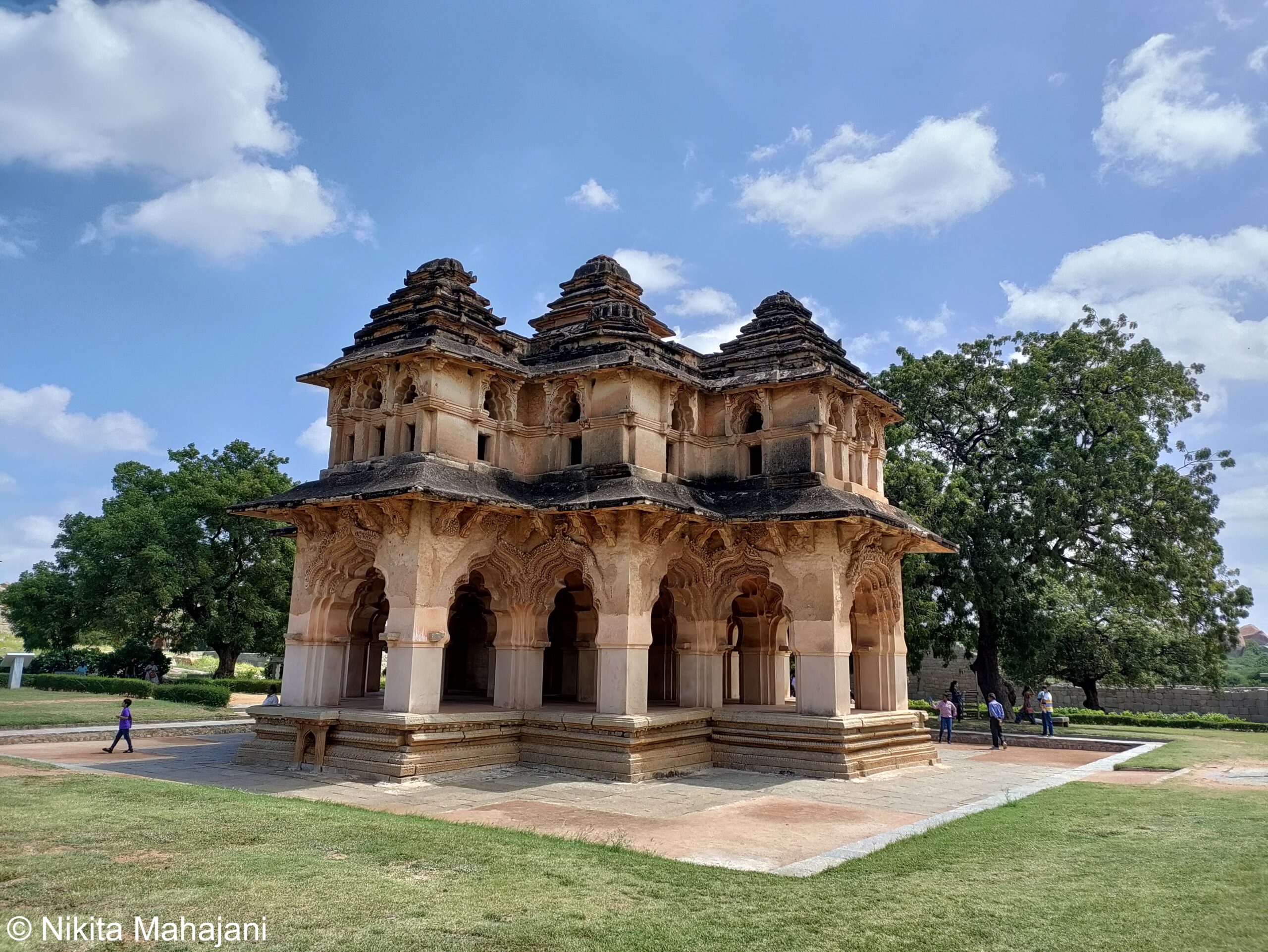
After a farewell lunch at Hampi Paradise, Hampi, we journeyed to Belagavi, reaching the Orchard Resort, Belagavi by 9 PM for a restful night before our journey back to Pune. Although Orchard Resort, Belagavi is pet friendly, they charge Rs.1000 per pet per day apart from the room tariff.
To read the next blog on Hampi-Badami Day-6 click here
Where did we eat ?
Hotel Sadguru pure veg, Wadhe, Pune-Satara road
Amar Only veg, Karnataka
Sri Veerabhadreshwar Lingayat Khanavali
Special Tea & Coffee, Hampi
Hampi Paradise, Hampi
A1 Hotel Raj, Hubballi
Udupi Grand Family restaurant, Nipani
Hotel Sadguru, Satara
Where did we stay ?
Hotel Badami Court
Goan corner / Zostel Gangavathi
Orchard Resort, Belagavi
